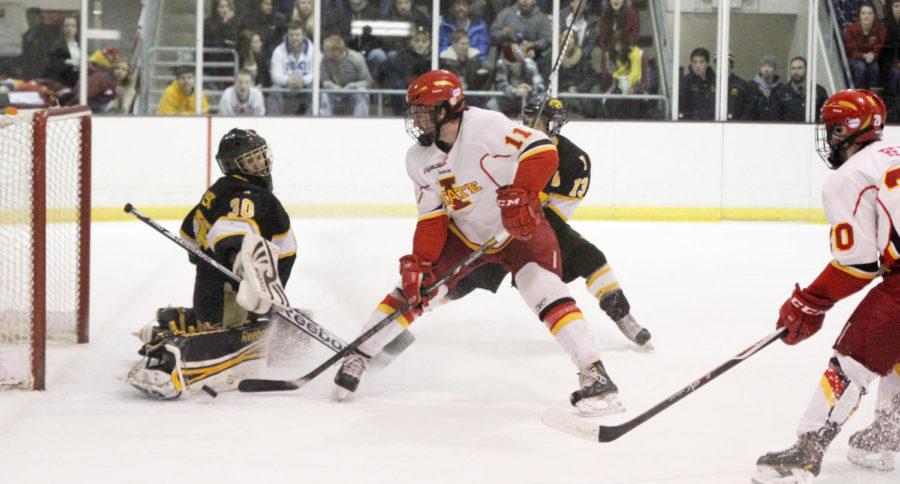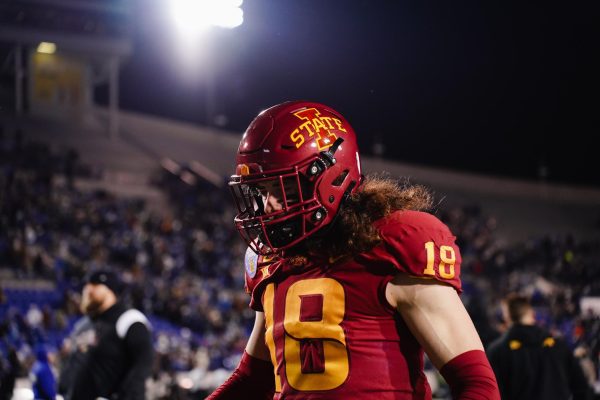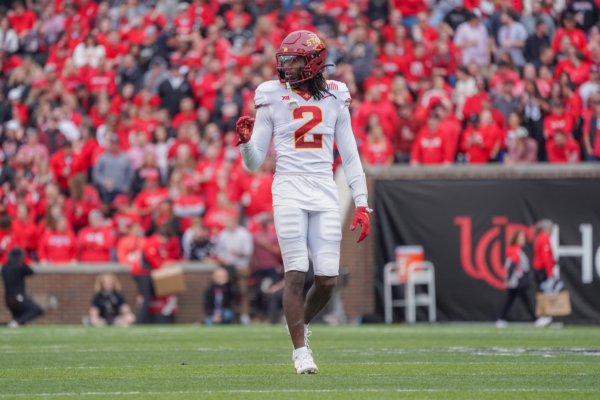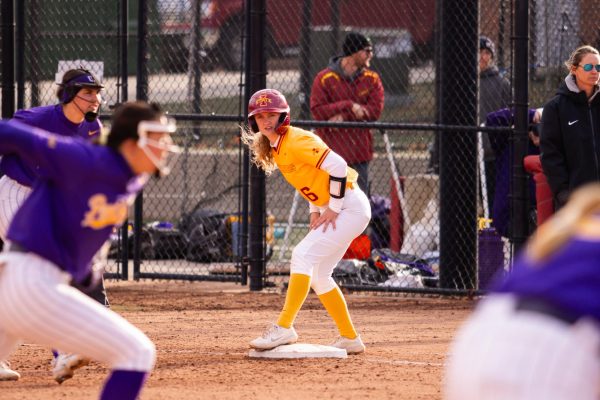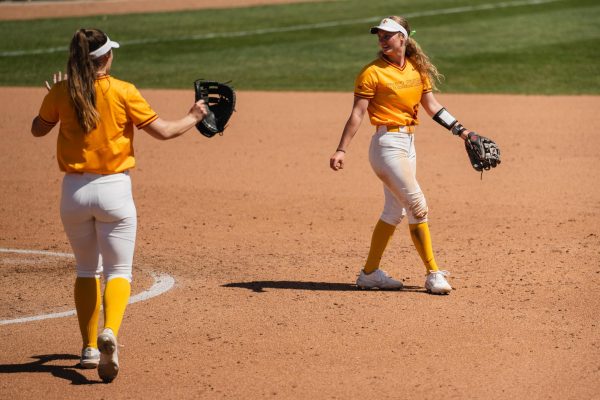Be tough: The culture of hockey
Junior forward J.P. Kascsak attempts a goal against Iowa’s Alex Wisnousky on Jan. 24, 2014 at the ISU/Ames Ice Arena. The Cyclones beat the in-state rival 1-0.
December 15, 2014
J.P. Kascsak flies into the boards to check a player in the corner of the rink. He slightly misses and jams his hands into the board.
Kascsak feels a slight twinge in his knuckle as he grabs the puck in the defensive zone. As he moves past neutral ice into the offensive zone, he turns and sees Nate Percy with his stick cocked, waiting to shoot. As he pushes the pain to the back of his mind, he makes the pass.
Stories like these are commonplace in the world of hockey. Players in all levels are taught many things, but one phrase sticks out among the rest.
“Be tough.”
Hockey gets the tough reputation from different facets of the game: Playing through injuries, delivering big hits and fighting to just name a few.
Fighting is one part of the game that separates it from other high-contact sports. With the feeling that fighting isn’t essential, some writers and players have made the push to try to remove it from the game altogether.
“Fighting is a policing system,” said Cyclone Hockey head coach Jason Fairman. “When players are skating with sticks, you have to be held accountable if you are careless or do something cheap. I’m not saying I agree with it or condone it, but a part of me understands why it is hard for the NHL to take it out of the game.”
The “tough guy” culture in hockey that includes fighting isn’t a new idea. It has been going on as long as hockey has been a sport.
As hockey came to light in 19th century Canada, players played the game with little regulation, which led players to use force and intimidation to gain an advantage over their opponents.
Adding to that tough culture was the implementation of the blue line in the early 1900s. With the blue line, teams couldn’t pass the puck as far due to an offside violation, so a breed of players named “enforcers” or “intimidators” ensued to protect puck handlers in the neutral zone.
Enforcers would be tasked with keeping an eye out for what they deemed as misconduct on the ice and would fight if necessary.
In 1922, the NHL introduced a rule to give out five-minute major penalties for fighting to speed up the game, which trickled down to college and high school and is still a part of the game today.
Whether it be the NCAA or the American Collegiate Hockey Association, there is a strict no-fight rule in place. For both leagues, the penalties are severe. The players who fight are given a five-minute major penalty paired with a suspension for that game and the next, which can be significant when they play a small amount of games per season compared to higher levels.
The rule in college hockey puts some players in a tough spot. At the junior level, a league where most college players go after high school, fighting is legal. Although, there is a severe ten-minute major penalty, it is still part of the game.
With most players in the NCAA or ACHA, they have had the experience of playing at the junior level, which means they learned a different type of game. The game of fighting.
On the Cyclone Hockey team, all of the players have played at the junior level. Switching to college can be tough for some.
“It’s hard for some of us because we have all played juniors and had the experience of being able to fight, take our five minutes, then fight again if we wanted,” Kascsak said. “There are some things that happen and someone has to step up and make a statement. It changes the mentality and the momentum. I don’t think it should be removed.”
Part of the culture in hockey lends itself to injuries as well. It is common in hockey at all levels to hear players playing with injuries. For the most part, the injuries are minor, but once in a while players can be seen trying to play through potentially significant injuries.
Even though there can be dangers in worsening injuries, hockey players seem to not give a second look when going on the ice with a seemingly-minor injury.
“It’s kind of hockey nature,” Percy said. “You tend to keep injuries to yourself. You don’t want to take any shift for granted, so when you get injured you put it in the back of your mind and just keep going to try and help your team. Sometimes playing isn’t the best thing to do, it can make it worse.”
Playing through the pain of injuries can also be seen by a player as maintaining pride.
“You don’t want to let your teammates down because we are all a family,” said Cyclone Hockey captain Mike Dopko. “You can sacrifice a little pain and play through it to help out the team.”
This culture can get dangerous when it involves head injuries. As more and more research is accrued to show negative long-term effects of head injuries, high-contact sports are now at the forefront of criticism involving concussions. Hockey has been no exception, as retired NHL players have sued the NHL for head injuries suffered while in their playing career.
Because of the research, the culture has started to shift away from playing through dangerous head injuries as players start to know the negative consequences.
“People are starting to realize how serious concussions are,” Dopko said. “Even when I was younger, no one had any clue. If I got hit, they would say, ‘Oh, you got your bell rung.’ I was seeing stars and probably shouldn’t have played for a while after that. With all of the stories of players having problems later in life, it has started to change. You know, the head really isn’t something to mess around with. You can play through a torn muscle or maybe a broken bone, but a head is something you need.”
The shift has been a part of a large culture change in hockey due to head injuries that may see the end of fighting in the professional and junior levels.
Even with the changing culture in hockey, there seems to be one thing that remains constant and has for many years — being tough.
“It’s just different in hockey,” Kascsak said. “It seems like it’s one of the few sports where players play through nagging injuries. It’s just being tough and something that has been a part of it since it began.”

